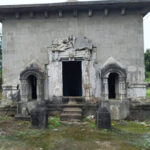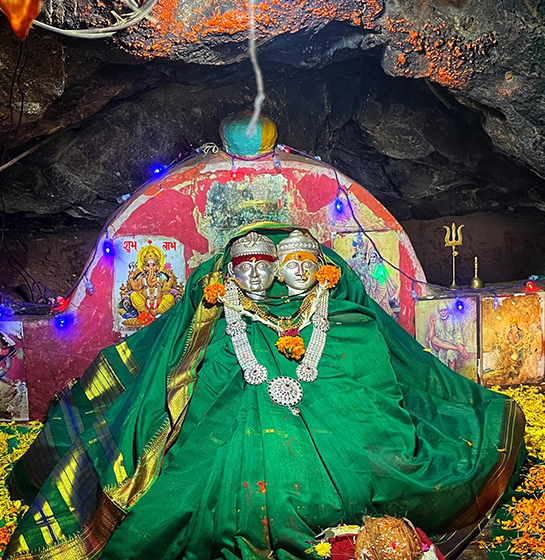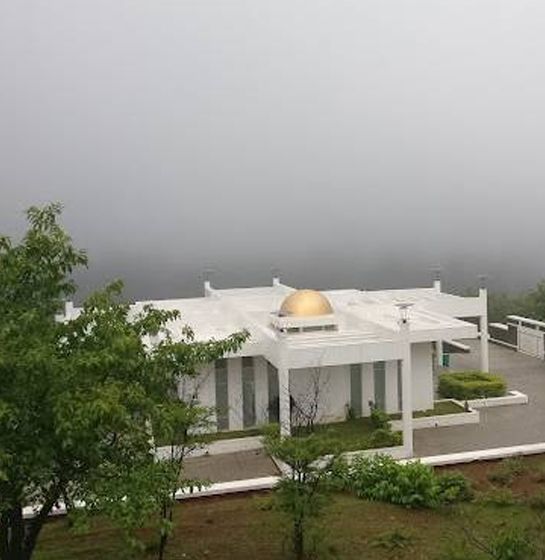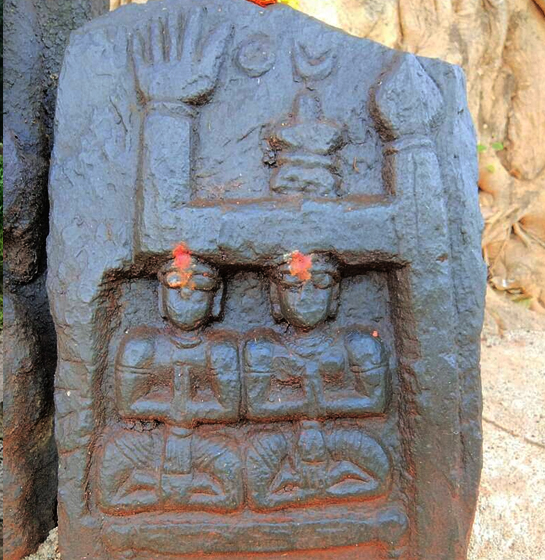Kharawade Mhasoba Temple
Mhsooba Temple, Kharavade #Mulshi
Located in the picturesque Mulshi taluka of Pune district, Kharavade is home to the sacred and self-manifested “Mhsooba Devasthan”, a revered place of worship for devotees. Known for granting wishes, it serves as a divine sanctuary where prayers are answered, offering an environment filled with hope and certainty to those in distress. The legend of Shri Kshetra Mhsooba dates back to the 13th century. According to the story, while gathering dry leaves and bamboo in the dense forests of Kharavade, Buwaji Marne suddenly found vermilion on his hand under a neem tree. That night, he had a vision revealing the birth of Shri Mhsooba, prompting him to excavate the area where a large statue covered in vermilion was discovered. This idol, believed to be that of Shri Mhsooba, became the focal point of worship in Kharavade. The shape of the idol resembles a Shiva lingam, believed to be an incarnation of Lord Shiva, known for his swift grace.
After the idol was discovered, a temporary hut made of grass (kambal) was erected for worship. Later, the statue was shaped into its current form by Vaman Kaka Khole from Andgaon. Alongside the self-manifested statue, there is a brass idol of Shri Mhsooba, as well as a trident (Trishul) nearby. Initially, prayers and religious rituals were performed at Marne’s house, but over time, devotees from surrounding regions began to visit, and the temple’s offerings increased. With donations and contributions from the community, the construction of the temple was entrusted to Shri. Disale in 1936.
The temple’s daily rituals are performed by the Mahadev Koli family, who have been responsible for the worship of all the local deities in Kharavade village. After daily rituals, the temple holds an Aarti at 12 PM, followed by offerings of food such as rice, lentils, or sweet dishes. On every full moon day, a Rudrabhishekam is performed. The annual festival in Chaitra Pournima is dedicated to Mahadev, featuring a grand Rudrabhishekam. During the nine nights, the temple’s deity is carried in a palkhi (palanquin) in a procession starting from the home of Marne family to the temple. On Dussehra, a similar procession is held to the Bhairavnath temple and back, with the villagers celebrating by engaging in a “golden program” where they simulate the process of looting gold.
Next to the shrine of Shri Mhsooba, there is also an idol of Vallanjai Devi. On the south side of the temple, after exiting the temple grounds, one will find temples of Lord Ganapati, Lord Maruti, and Lord Dattatreya. Additionally, there is a stone statue of a Pind (symbol of worship) and two elephant statues. A smaller temple near the main temple houses idols of deities from Andgaon, worshipped by the followers of Shri Salunke’s family. Behind the temple to the north is an idol of Buwaji Marne, with an additional idol of Munjaba Dev. Kharavade village also houses ancient idols of Bhairavnath, Lord Shankar, Kalubai, and Hanuman, showcasing fine sculptures in the traditional Shivakala style.
In 1993, a trust board was formed to ensure smooth administration and development of the temple. In 1980, the present temple structure was built following the planned restoration of the old temple constructed in 1936. The restoration was carried out by the skilled sculptor of Kharavade, Shri. Lakshman Tukaram Marne, and his associates, including late Raghunath Rao Jogawade, late Lakshman Rao Vitthal Rao Marne, late Narayan Rao Marne, late Sakharam Marne, Shri. Namdevrao Sonwane, Shri. Rambhau Salekar, Shri. Sadba Jogawade, and the cooperation of the entire village.
The temple also features the Shri Datt temple, founded by devotees such as Shrimati Birmal, Genuji, Haribhau Kachare, and Krishna Dhavade, who devoted themselves selflessly to the service of the deity. The same devotion continues with Shri. Ramesh (Baba) Kachare, Vijay Kachare, and the Wanjalwadi family, who dedicate themselves to the temple. The annual festival, celebrated with much enthusiasm, includes cultural programs such as drum and Lezim performances, and traditional wrestling after the morning “Hajeri”. On the day of Ashwin Purnima (Kojagiri Purnima), the temple celebrates the annual festival of Bhairavnath. A procession of Bhairavnath’s palkhi is taken out for the rituals, followed by the wedding ceremony of Bhairavnath and Yogeshwari Devi. The festivities also include rituals in the moonlight with cultural programs.
In the month of Margashirsha, the ‘Datt Jayanti’ festival is marked by a community recitation of ‘Guru Charitra’, while two Tuesdays of the month are celebrated with a grand community picnic. The villagers gather to offer sweet food to the deity and celebrate together. Throughout the year, all festivals are celebrated with the firm belief that the divine is the central force behind all celebrations.
The temple is also linked to the warriors of Mutha Khore, including the renowned and valiant warrior Bajipassalkar, who were known to visit for darshan. Swami Amritanand Dev, the spiritual leader of Badrikashram, also visited the temple thrice. Every year, Shri. Chandrakant Bharekar and his family organize free community marriages, without dowries, in a spirit of divine celebration. The temple also runs various initiatives for the development of the village and its people. One such example is the “Nirmal Gram” competition, where the village achieved remarkable success.
Thank you,
Akash Marne
Team Mulshi
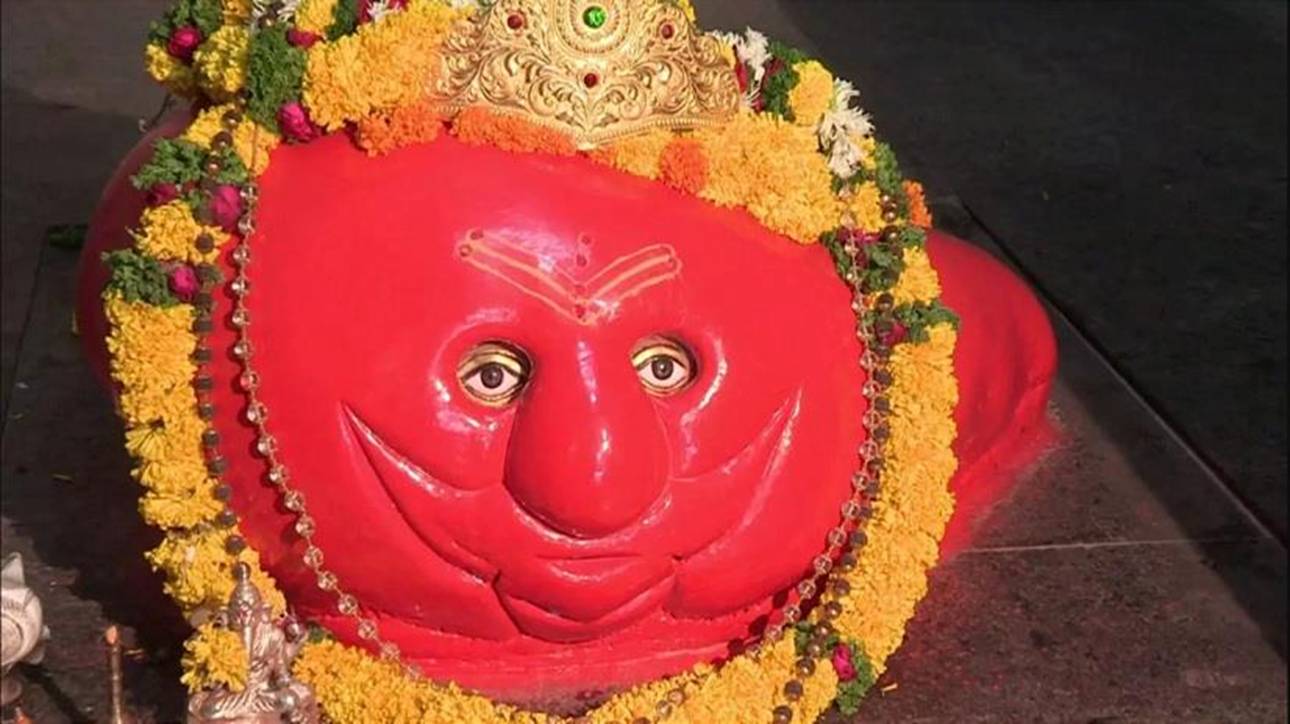
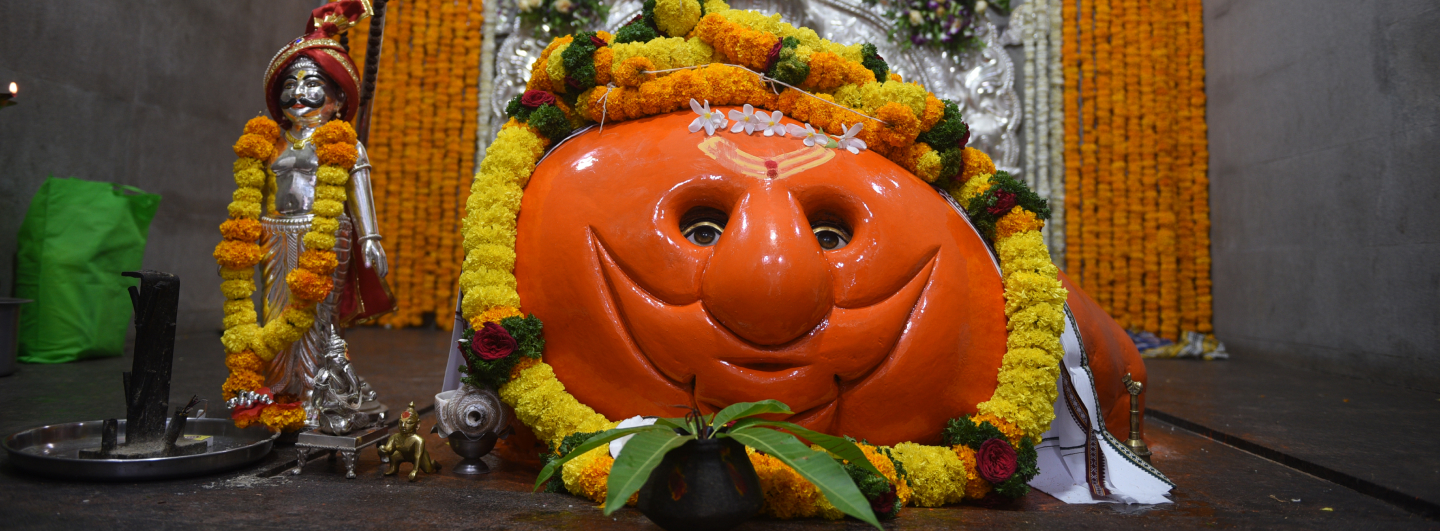

Kharawade Mhasoba Temple Details
Pune to Kharawade Mhsooba Temple
Duration: 1.30 to 2 hours

What to Expect
A mix of dense forest and open plateau.
– Various fruit-bearing trees and lush vegetation.
– Historical and cultural sites along the trail

Best Time to Visit
– Winter (October to February): Ideal for trekking due to pleasant weather.
– Monsoon (June to September): Offers lush greenery and waterfalls but requires extra caution due to wet conditions.
– Summer (March to May): Can be quite hot; start hikes early to avoid the heat.

How to reach there
Mulshi is accessible by road from Pune and Mumbai. Public transportation options and private vehicles are available for reaching the Kharawade Mhasoba Temple.

Tips for Hikers
Carry at least 3 liters of water and some snacks.
– Consider hiring a local guide for a more informative experience.
– Start early to avoid the midday heat.
Experience the various trekking routes of Mulshi and immerse yourself in the natural beauty and cultural richness of this captivating region. Whether you seek adventure, tranquility, or historical exploration, Mulshi offers you a unique trekking experience.
admin
Published: October 10, 2024
